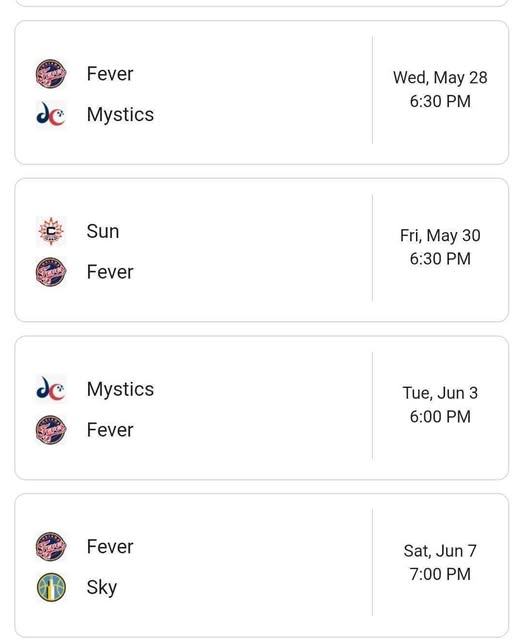The upcoming schedule over the next two weeks is perfectly aligned with giving CC the time she needs to recover fully before facing New York again on June 14. This timing is ideal because it alleviates the pressure on her to rush back onto the field while her quad remains aggravated. Injuries, especially to muscles like the quadriceps, require careful management and adequate rest, and the team’s schedule now allows precisely that.
It’s important to acknowledge that the team is very capable of winning the upcoming games without CC’s presence on the court. Although she may be a key player and a significant contributor, the strength and depth of the roster ensure that the team can continue performing well. This flexibility in the lineup provides a tactical advantage—allowing the coaching staff to rest important players when necessary and still maintain a competitive edge.
CC has been a driving force for the team throughout the season. Her skills, leadership, and tenacity on the court have often been pivotal in crucial moments. However, injuries can sideline even the best athletes, and pushing through pain without proper recovery can have long-term consequences. The current schedule grants the perfect window to ensure she returns at full strength and at her best for the next critical matchups.
Managing player health is a vital part of any team’s strategy. It’s no longer just about the immediate game but ensuring the longevity and well-being of key athletes throughout the season. The quad injury that CC is dealing with is particularly tricky because it affects a muscle group that is heavily engaged during rapid acceleration, jumping, and sudden changes in direction—all fundamental movements in her game. A rushed return could worsen the injury, extend downtime, and negatively affect both her career and the team’s performance in the long run.
The team’s depth allows for a more patient and thoughtful approach to recovery. Other players can step into the roles that CC would typically fill. This presents an opportunity for less-utilized players to prove themselves and gain valuable experience. It also fosters a sense of collective responsibility and resilience within the squad. The coaching staff can experiment with different lineups and strategies, which can be beneficial when CC returns, offering the team more tactical options.
Moreover, the psychological aspect of recovery is just as important. Knowing that the schedule allows her the necessary time to heal reduces the mental pressure on CC. Athletes often face the challenge of balancing the desire to compete with the need to recover. The assurance that she is not being rushed back prematurely allows her to focus on rehabilitation, conditioning, and mental preparation.
This approach aligns with modern sports science and best practices. Athletes who recover fully tend to perform better and avoid repeated injuries. The two-week gap before facing New York again gives CC enough time for rehabilitation protocols, physical therapy, and gradual return to full training intensity. This way, when she steps back on the court, she will be physically ready and mentally confident.
The rest of the team will also benefit from this schedule. It allows the coaching staff to maintain game rhythm and momentum without over-relying on one player. They can distribute minutes more evenly, potentially preventing fatigue-related injuries among the rest of the squad. With proper management, the team can stay competitive and well-prepared for the intense matches ahead.
It’s worth noting that playing on an aggravated quad injury is a gamble no team should take. Injuries are not just setbacks but can become chronic issues that haunt players for seasons. Protecting CC now will ensure she has the longevity to contribute not only to the remainder of this season but to future campaigns as well. This strategic patience highlights the professionalism of the team’s medical and coaching staff, who prioritize player welfare above short-term gains.
In addition, the team’s culture appears to embrace the collective effort rather than relying solely on star power. This ethos is crucial in navigating periods when key players are unavailable. It encourages all team members to step up, remain engaged, and contribute in their own ways. Such unity can often translate into unexpected victories and strong performances, even without the full roster.
Looking ahead, the June 14 rematch with New York will be a crucial one. It’s the kind of game where having CC fully recovered will make a substantial difference. Her presence on the court will provide not only the technical skill and athleticism but also the leadership and morale boost the team will need. This match will likely be a high-intensity encounter requiring all players to be at their best.
Therefore, ensuring she is not rushed back prematurely is a wise decision. The team is sending a message that recovery is a priority and that they are confident in their collective ability to handle the upcoming games in her absence. This also sets a precedent for managing future injuries, promoting a sustainable approach to athlete health.
In summary, the schedule over the next two weeks provides an excellent opportunity for CC to fully recover from her quad injury. The team’s depth and capability allow them to compete successfully without her, removing the need for her to risk aggravating her injury by playing prematurely. This thoughtful approach benefits the player, the team, and their prospects in future contests. When she returns fully fit for the rematch against New York on June 14, CC will be better positioned to make a significant impact. The combination of strategic rest, team resilience, and medical support underscores a professional, forward-thinking approach to managing player health and team success.
This moment exemplifies how modern sports teams balance the immediate demands of competition with the long-term wellbeing of their players. It is a testament to the understanding that an injury today, if mishandled, can become a serious liability tomorrow. The patience shown now is an investment in the future, ensuring that the team can count on CC and other key players to perform at their peak when it matters most.
Furthermore, this approach encourages a broader discussion about how teams handle injuries and player availability. Rather than pushing athletes to compete through pain, prioritizing recovery can lead to better outcomes for everyone involved. It reflects an evolving mindset in sports, one that values health and longevity alongside performance and winning.
The two-week break in the schedule, therefore, is not merely a pause in competition but a crucial period for rest and healing. It allows the team to regroup, adapt, and maintain their competitive edge without unnecessary risk. For CC, it represents a chance to heal properly, train effectively, and return stronger.
In the end, the strategy reflects confidence in the whole team rather than reliance on any single player. It reinforces the importance of depth, preparation, and adaptability in sports. The next two weeks, while providing a recovery window for CC, also serve as a testing ground for the rest of the team to rise to the occasion and maintain momentum. This balanced approach to scheduling and player management ultimately contributes to sustained success and resilience.



